- Home
- George R. R. Martin
Dreamsongs. Volume I Page 2
Dreamsongs. Volume I Read online
Page 2
It was the first issue of Justice League of America that destroyed my year-old maturity. I had always loved World’s Finest Comics, where Superman and Batman teamed up, but JLA brought together all the major DC heroes. The cover of that first issue showed the Flash playing chess against a three-eyed alien. The pieces were shaped like the members of the JLA, and whenever one was captured, the real hero disappeared. I had to have it.
Next thing I knew, the orange crate was filling up once more. And a good thing too. Otherwise I might not have been at the comics rack in 1962, to stumble on the fourth issue of some weird-looking funny book that had the temerity to call itself “the World’s Greatest Comic Magazine.” It wasn’t a DC. It was from an obscure, third-rate company best known for their not-very-scary monster comics…but it did seem to be a superhero team, which was my favorite thing. I bought it, even though it cost twelve cents (comics were meant to be a dime!), and thereby changed my life.
It was the World’s Greatest Comic Magazine, actually. Stan Lee and Jack Kirby were about to remake the world of funny books. The Fantastic Four broke all the rules. Their identities were not secret. One of them was a monster (the Thing, who at once became my favorite), at a time when all heroes were required to be handsome. They were a family, rather than a league or a society or a team. And like real families, they squabbled endlessly with one another. The DC heroes in the Justice League could only be told apart by their costumes and their hair colors (okay, the Atom was short, the Martian Manhunter was green, and Wonder Woman had breasts, but aside from that they were the same), but the Fantastic Four had personalities. Characterization had come to comics, and in 1961 that was a revelation and a revolution.
The first words of mine ever to appear in print were “Dear Stan and Jack.”
They appeared in Fantastic Four #20, dated August 1963, in the letter column. My letter of comment was insightful, intelligent, analytical—the main thrust of it was that Shakespeare had better move on over now that Stan Lee had arrived. At the end of my words of approbation, Stan and Jack printed my name and address.
Soon after, a chain letter turned up in my mailbox.
Mail for me? That was astonishing. It was the summer between my freshman and sophomore years at Marist High School, and everyone I knew lived in either Bayonne or Jersey City. Nobody wrote me letters. But here was this list of names, and it said that if I sent a quarter to the name at the top of the list, removed the top name and added mine at the bottom, then sent out four copies, in a few weeks I’d get $64 in quarters. That was enough to keep me in funny books and Milky Ways for years to come. So I scotch-taped a quarter to an index card, put it in an envelope, mailed it off to the name at the top of the list, and sat back to await my riches.
I never got a single quarter, damn it.
Instead I got something much more interesting. It so happened that the guy at the top of the list published a comic fanzine, priced at twenty-five cents. No doubt he mistook my quarter for an order. The ’zine he sent me was printed in faded purple (that was “ditto,” I would learn later), badly written and crudely drawn, but I didn’t care. It had articles and editorials and letters and pinups and even amateur comic strips, starring heroes I had never heard of. And there were reviews of other fanzines too, some of which sounded even cooler. I mailed off more sticky quarters, and before long I was up to my neck in the infant comics fandom of the ’60s.
Today, comics are big business. The San Diego Comicon has grown into a mammoth trade show that draws crowds ten times the size of science fiction’s annual WorldCon. Some small independent comics are still coming out, and comicdom has its trade journals and adzines as well, but no true fanzines as they were in days of yore. The moneychangers long ago took over the temple. In the ultimate act of obscenity, Golden Age comics are bought and sold inside slabs of Mylar to ensure that their owners can never actually read them, and risk decreasing their value as collectibles (whoever thought of that should be sealed inside a slab of Mylar himself, if you ask me). No one calls them “funny books” anymore.
Forty years ago it was very different. Comics fandom was in its infancy. Comicons were just starting up (I was at the first one in 1964, held in one room in Manhattan, and organized by a fan named Len Wein, who went on to run both DC and Marvel and create Wolverine), but there were hundreds of fanzines. A few, like Alter Ego, were published by actual adults with jobs and lives and wives, but most were written, drawn, and edited by kids no older than myself. The best were professionally printed by photo-offset or letterpress, but those were few. The second tier were done on mimeograph machines, like most of the science fiction fanzines of the day. The majority relied on spirit duplicators, hektographs, or xerox. (The Rocket’s Blast, which went on to become one of comicdom’s largest fanzines, was reproduced by carbon paper when it began, which gives you some idea of how large a circulation it had.)
Almost all the fanzines included a page or two of ads, where the readers could offer back issues for sale and list the comics they wanted to buy. In one such ad, I saw that some guy from Arlington, Texas, was selling The Brave and the Bold #28, the issue that introduced the JLA. I mailed off a sticky quarter, and the guy in Texas sent the funny book with a cardboard stiffener on which he’d drawn a rather good barbarian warrior. That was how my lifelong friendship with Howard Waldrop began. How long ago? Well, John F. Kennedy flew down to Dallas not long after.
My involvement in this strange and wondrous world did not end with reading fanzines. Having been published in the Fantastic Four, it was no challenge to get my letters printed by fanzines. Before long I was seeing my name in print all over the place. Stan and Jack published more of my LOCs as well. Down the slippery slope I went, from letters to short articles, and then a regular column in a fanzine called The Comic World News, where I offered suggestions on how comics I did not like could be “saved.” I did some art for TCWN as well, despite the handicap of not being able to draw. I even had one cover published: a picture of the Human Torch spelling out the fanzine’s name in fiery letters. Since the Torch was a vague human outline surrounded by flames, he was easier to draw than characters who had noses and mouths and fingers and muscles and stuff.
When I was a freshman at Marist, my dream was still to be an astronaut…and not just your regular old astronaut, but the first man on the moon. I still recall the day one of the brothers asked each of us what we wanted to be, and the entire class burst into raucous laughter at my answer. By junior year, a different brother assigned us to research our chosen careers, and I researched fiction writing (and learned that the average fiction writer made $1200 a year from his stories, a discovery almost as appalling as that laughter two years earlier). Something profound had happened to me in between, to change my dreams for good and all. That something was comics fandom. It was during my sophomore and junior years at Marist that I first began to write actual stories for the fanzines.
I had an ancient manual typewriter that I’d found in Aunt Gladys’ attic, and had fooled around on it enough to become a real one-finger wonder. The black half of the black-and-red ribbon was so worn you could hardly read the type, but I made up for that by pounding the keys so hard they incised the letters into the paper. The inner parts of the “e” and “o” often fell right out, leaving holes. The red half of the ribbon was comparatively fresh; I used red for emphasis, since I didn’t know anything about italics. I didn’t know about margins, doublespacing, or carbon paper either.
My first stories starred a superhero come to Earth from outer space, like Superman. Unlike Superman, however, my guy did not have a super physique. In fact, he had no physique at all, since he lacked a body. He was a brain in a goldfish bowl. Not the most original of notions; brains in jars were a staple of both print SF and comics, although usually they were the villains. Making my brain-in-a-jar the good guy seemed a terrific twist to me.
Of course, my hero had a robot body he could put on to fight crime. In fact, he had a whole bunch of robot bodies. Some had
jets so he could fly, some had tank treads so he could roll, some had jointed robot legs so he could walk. He had arms ending in fingers, arms ending in tentacles, arms ending in big nasty metal pincers, arms ending in ray guns. In each story my space brain would don a different body, and if he got smashed up by the villain, there were always spares back in his spaceship.
I called him Garizan, the Mechanical Warrior.
I wrote three stories about Garizan; all very short, but complete. I even did the art. A brain in a goldfish bowl is almost as easy to draw as a guy made of fire.
When I shipped off the Garizan stories, I chose one of the lesser fanzines of the day, figuring they stood a better chance of being accepted there. I was right. The editor snapped them up with shouts of glee. This was less of an accomplishment than it might seem. Many of those early fanzines were perpetually desperate for material to fill their dittoed pages, and would have accepted anything anyone cared to send them, even stories about a brain in a goldfish bowl. I could scarcely wait to see my stories in print.
Alas. The fanzine and its editor promptly vanished, before publishing even one of my Garizan stories. The manuscripts were not returned, and since I had not yet mastered the complexities of carbon paper, I had no file copies.
You would think that might have discouraged me, but in fact the acceptance of my stories had done such wonders for my confidence that I hardly noticed their subsequent disappearance. I went back to my typewriter, and invented a new hero. This one I named Manta Ray. A Batman wannabee, Manta Ray was a masked avenger of the night who fought crime with a bullwhip. In his first adventure I pitted him against a villain named the Executioner who had a special gun that shot tiny little guillotine blades instead of bullets.
“Meet the Executioner” turned out much better than any of the Garizan stories, so when it was done I raised my sights and sent it to a higher-quality fanzine. Ymir, edited by Johnny Chambers, was one of a number of ’zines coming out of the San Francisco Bay Area, a hotbed of early comics fandom.
Chambers accepted my story…and what’s more, he published it! It appeared in Ymir #2, dated February 1965; nine pages of superheroics in glorious purple ditto. Don Fowler, one of the leading fan artists of the time (actually a pseudonym for Buddy Saunders), provided a dramatic title page showing the Executioner shooting little guillotines at Manta Ray. He added some nice spot illoes as well. Fowler’s art was so much better than anything I could have done that I gave up my own feeble attempts at drawing after that, and settled for telling my stories in prose. “Text stories,” they were called in those early days of comicdom, to distinguish them from fully-illustrated comic strips (which were much more popular with my fellow fanboys).
Manta Ray later returned for a second story, this one so long (twenty single-spaced pages or so) that Chambers decided to serialize it. The first half of “The Isle of Death” appeared in Ymir #5, and ended with a “To Be Continued.” Only it wasn’t. Ymir never had another issue, and the second half of Manta Ray’s second adventure went the same way as the three lost Garizan stories.
Meanwhile, I had raised my sights still higher. The most prestigious fanzine in early comics fandom was Alter Ego, but that was largely given over to articles, critiques, interviews. For text stories and amateur strips, the place to be was Star-Studded Comics, published by three Texas fans named Larry Herndon, Buddy Saunders, and Howard Keltner, who called themselves the Texas Trio.
When SSC was launched in ’63, it featured a full-color, printed cover glorious to behold, compared to most other fanzines of the day. The inside of the first few issues was the usual faded ditto, but with their fourth issue the Texas Trio went to photo-offset for the interiors as well, making SSC far and away the best-looking fanzine of its time. Just like Marvel and DC, the Trio had their own stable of superheroes; Powerman, the Defender, Changling, Dr. Weird, the Eye, the Human Cat, the Astral Man, and more. Don Fowler, Grass Green, Biljo White, Ronn Foss, and most of the other top fan artists were doing strips for them, and Howard Waldrop was writing text stories (Howard was sort of the fourth member of the Texas Trio, kind of like being the fifth Beatle). So far as comics fandom was concerned in 1964, Star-Studded Comics was the big time.
I wanted to be part of it, and I had a terrific original idea. Brains in jars like Garizan and masked crimefighters like Manta Ray were old hat, but no one had ever put a superhero on skis. (I had never skiied. Still haven’t.) My hero had one ski pole that was also a flamethrower, while the other doubled as a machine gun. Instead of fighting some stupid supervillain, I pitted him against the Commies to be “realistic.” But the best part of my story was the ending, where the White Raider met a shocking, tragic end. That would make the Texas Trio sit up and take notice, I was certain.
I called the story “The Strange Saga of the White Raider,” and sent it off to Larry Herndon. As well as being one-third of SSC’s august editorial triad, Larry had been one of the first people I’d struck up a correspondence with on entering comicdom. I was sure that he would like the story.
He did…but not for SSC. He explained to me that the Trio’s flagship fanzine had a full slate of characters. Rather than adding more, he and Howard and Buddy wanted to develop the heroes they had already introduced. They all liked my writing, though. They would be glad to have me write for Star-Studded Comics…so long as I wrote stories about their existing characters.
That was how it happened that “The Strange Saga of the White Raider” ran in Batwing, Larry Herndon’s solo fanzine, while I went on to appear in SSC with text stories about two of Howard Keltner’s creations. The Powerman story came first. “Powerman Vs. The Blue Barrier!” was published in SSC #7, in August 1965, and was well-received…but it was “Only Kids Are Afraid of the Dark,” my Dr. Weird story in SSC #10, that really made my name in comicdom.
Dr. Weird was a mystic avenger who fought ghosts, werewolves, and other supernatural menaces. Despite the similarity of their names, he had little in common with Marvel’s Dr. Strange. Keltner had modeled him on a Golden Age hero called Mr. Justice. Doc Weird went my White Raider one better, dying halfway through his first story instead of at the end. A time traveler from the future, he had stepped out of his time machine right into the middle of a robbery, and was immediately shot and killed. By dying before he was born, however, he had unbalanced the cosmos, so now he had to walk the earth righting wrongs until his birth came round.
I soon found I had an affinity for Doc Weird. Keltner liked what I did with him and encouraged me to do more stories, so when he spun the character off into his own fanzine, I wrote a script called “The Sword and the Spider” that a new, unknown artist illustrated handsomely. Jim Starlin also adapted “Only Kids Are Afraid of the Dark” to comic form…but the text story came first.
Comicdom had established its own awards by then. The Alley Awards were named after Alley Oop, “the oldest comic character of all” (the Yellow Kid might have disagreed). Like the Hugo Awards, the Alleys had categories for both professional and fan work; Golden Alleys for the pros, Silver Alleys for the fans. “Only Kids Are Afraid of the Dark” was nominated for a Silver Alley for best text story…and to my shock and delight, it won (quite undeservedly, as Howard Waldrop and Paul Moslander were writing rings around me). Visions of gleaming silver trophies danced briefly in my head, but I never received a thing. The sponsoring organization soon collapsed, and that was the end of the Alley Awards…but the recognition did wonders for my confidence, and helped to keep me writing.
By the time my Dr. Weird stories appeared in print, however, my life had undergone some profound changes. I graduated Marist High in June of 1966. That September I left home for the first time in my life, and rode the Greyhound out to Illinois to attend the Medill School of Journalism at Northwestern University.
College was a strange new world, as exciting as it was scary. I lived in a freshman dorm called Bobb Hall (my mother kept getting confused and thinking Bob was my roommate), in this strange midwestern land where the
news came on too early and no one knew how to make a decent pizza pie. The coursework was challenging, there were new friends to make, new ass-holes to contend with, new vices to acquire (hearts my freshman year, beer when I was a junior)…and there were girls in my classes. I still bought comics when I saw them, but soon I was missing issues, and my fanac dropped off precipitously. With so much newness to contend with, it was hard to find the time to write. I finished only one story my freshman year—a straight science fiction story called “The Coach and the Computer,” which was published in the first (and only) issue of an obscure fanzine called In-Depth.
My major was journalism, but I took a minor in history. My sophomore year I signed up for the History of Scandinavia, thinking it would be cool to study Vikings. Professor Franklin D. Scott was an enthusiastic teacher who invited the class to his home for Scandinavian food and glug (a mulled wine with raisins and nuts floating in it). We read Norse sagas, Icelandic eddas, and the poems of the Finnish patriotic poet Johan Ludvig Runeberg.
I loved the sagas and the eddas, which reminded me of Tolkien and Howard, and was much taken with Runeberg’s poem “Sveaborg,” a rousing lament for the great Helsinki fortress “Gibraltar of the North,” which surrendered inexplicably during the Russo-Swedish War of 1808. When it came time to write term papers, I chose “Sveaborg” for my topic. Then I had an off-the-wall idea. I asked Professor Scott if he would allow me to submit a story about “Sveaborg” rather than a conventional paper. To my delight, he agreed.
“The Fortress” got me an A…but more than that, Professor Scott was so pleased with the story that he sent it off to The American-Scandinavian Review for possible publication.
The first rejection letter I ever received was not from Damon Knight, nor Frederik Pohl, nor John Wood Campbell, Jr., but from Erik J. Friis, editor of The American-Scandinavian Review, who regretted “very much” having to return “The Fortress” to me. “It is a very good article,” he wrote in a letter dated June 14, 1968, “but unfortunately too long for our purpose.”

 A Dance with Dragons
A Dance with Dragons A Storm of Swords
A Storm of Swords A Feast for Crows
A Feast for Crows A Clash of Kings
A Clash of Kings A Game of Thrones
A Game of Thrones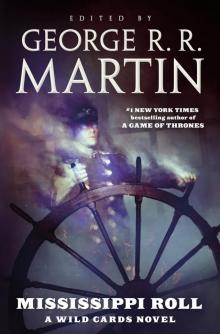 Mississippi Roll
Mississippi Roll Wild Cards V: Down and Dirty
Wild Cards V: Down and Dirty Busted Flush
Busted Flush When the Devil Drives
When the Devil Drives Dying of the Light
Dying of the Light The Ice Dragon
The Ice Dragon Sandkings
Sandkings Jokertown Shuffle
Jokertown Shuffle Dreamsongs. Volume II
Dreamsongs. Volume II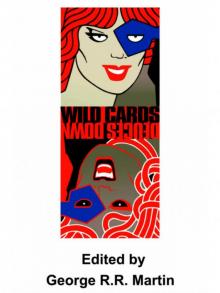 Deuces Down
Deuces Down When We Were Heroes
When We Were Heroes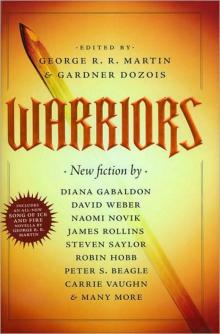 Warriors
Warriors In the House of the Worm
In the House of the Worm Death Draws Five
Death Draws Five Dreamsongs. Volume I
Dreamsongs. Volume I Marked Cards
Marked Cards Dreamsongs
Dreamsongs Card Sharks
Card Sharks Dangerous Women
Dangerous Women Inside Straight
Inside Straight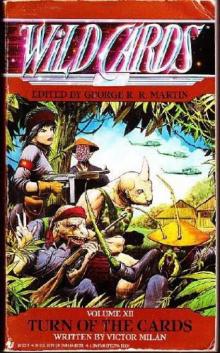 Turn of the Cards
Turn of the Cards Fevre Dream
Fevre Dream High Stakes: A Wild Cards Novel
High Stakes: A Wild Cards Novel Windhaven
Windhaven Tuf Voyaging
Tuf Voyaging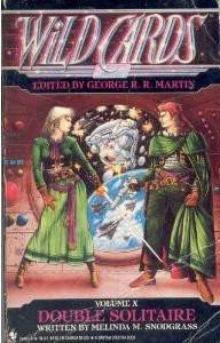 Double Solitaire
Double Solitaire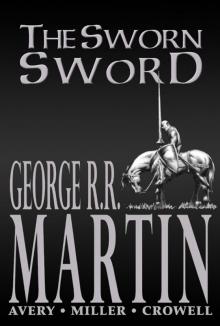 The Sworn Sword
The Sworn Sword Low Chicago
Low Chicago Dead Man's Hand
Dead Man's Hand Wild Cards
Wild Cards Black Trump
Black Trump One Eyed Jacks
One Eyed Jacks Wild Cards: Aces Abroad
Wild Cards: Aces Abroad Lowball: A Wild Cards Novel
Lowball: A Wild Cards Novel Double Solitaire (2019 Edition)
Double Solitaire (2019 Edition) Dealer's Choice
Dealer's Choice Ace in the Hole
Ace in the Hole A Song for Lya: And Other Stories
A Song for Lya: And Other Stories Three Kings
Three Kings Knaves Over Queens
Knaves Over Queens Joker Moon
Joker Moon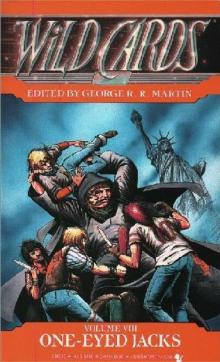 One Eyed Jacks wc-8
One Eyed Jacks wc-8 Down And Dirty wc-5
Down And Dirty wc-5 Mississippi Roll_A Wild Cards Novel
Mississippi Roll_A Wild Cards Novel A Feast for Dragons
A Feast for Dragons The Sworn Sword ttodae-2
The Sworn Sword ttodae-2 Aces High wc-2
Aces High wc-2 Wild Cards 13 : Card Sharks
Wild Cards 13 : Card Sharks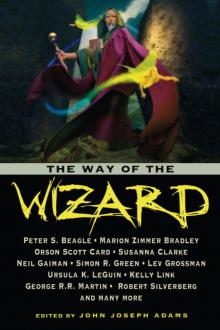 Way of the Wizard
Way of the Wizard Wild Cards VIII: One-Eyed Jacks
Wild Cards VIII: One-Eyed Jacks A Dance With Dragons: Book 5 of A Song of Ice and Fire (Song of Ice & Fire 5)
A Dance With Dragons: Book 5 of A Song of Ice and Fire (Song of Ice & Fire 5) The Princess and The Queen, Or, The Blacks and The Greens (a song of ice and fire)
The Princess and The Queen, Or, The Blacks and The Greens (a song of ice and fire) Wild Cards VI--Ace in the Hole
Wild Cards VI--Ace in the Hole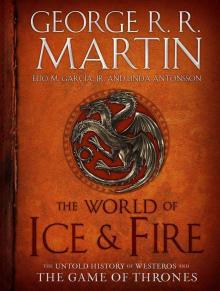 The World of Ice & Fire: The Untold History of Westeros and the Game of Thrones (A Song of Ice and Fire)
The World of Ice & Fire: The Untold History of Westeros and the Game of Thrones (A Song of Ice and Fire) The World of Ice & Fire: The Untold History of Westeros and the Game of Thrones
The World of Ice & Fire: The Untold History of Westeros and the Game of Thrones Busted Flush wc-19
Busted Flush wc-19 A Knight of the Seven Kingdoms
A Knight of the Seven Kingdoms Nightflyers: The Illustrated Edition
Nightflyers: The Illustrated Edition Wild Cards IV
Wild Cards IV Portraits of His Children
Portraits of His Children Dead Mans Hand wc-7
Dead Mans Hand wc-7 Jokers Wild wc-3
Jokers Wild wc-3 The Lonely Songs of Laren Dorr
The Lonely Songs of Laren Dorr Wild Cards III: Jokers Wild
Wild Cards III: Jokers Wild A Game of Thrones Enhanced Edition
A Game of Thrones Enhanced Edition Nightflyers & Other Stories
Nightflyers & Other Stories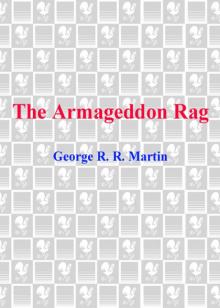 Armageddon Rag
Armageddon Rag Wild Cards: Inside Straight
Wild Cards: Inside Straight A Song for Lya
A Song for Lya A Dance with Dragons: A Song of Ice and Fire: Book Five
A Dance with Dragons: A Song of Ice and Fire: Book Five Song of Fire & Ice 01 - A Game of Thrones
Song of Fire & Ice 01 - A Game of Thrones Death Draws Five wc-17
Death Draws Five wc-17 Turn of the Cards w-12
Turn of the Cards w-12 Wild Cards 14 - Marked Cards
Wild Cards 14 - Marked Cards Hunter's Run
Hunter's Run The Glass Flower
The Glass Flower A Clash of Kings asoiaf-2
A Clash of Kings asoiaf-2 A Game of Thrones 5-Book Bundle: A Song of Ice and Fire Series: A Game of Thrones, A Clash of Kings, A Storm of Swords, A Feast for Crows, and A Dance with Dragons (Song of Ice & Fire)
A Game of Thrones 5-Book Bundle: A Song of Ice and Fire Series: A Game of Thrones, A Clash of Kings, A Storm of Swords, A Feast for Crows, and A Dance with Dragons (Song of Ice & Fire) Ace In The Hole wc-6
Ace In The Hole wc-6 Suicide Kings wc-20
Suicide Kings wc-20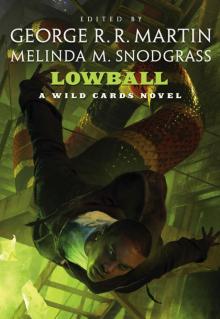 Lowball
Lowball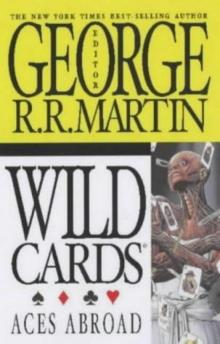 Aces Abroad wc-4
Aces Abroad wc-4 George R. R. Martin's a Game of Thrones 4-Book Bundle
George R. R. Martin's a Game of Thrones 4-Book Bundle A Feast for Crows asoiaf-4
A Feast for Crows asoiaf-4 A Game of Thrones asoiaf-1
A Game of Thrones asoiaf-1 The Mystery Knight ttodae-3
The Mystery Knight ttodae-3 Double Solitaire w-10
Double Solitaire w-10 Wild Cards 15 - Black Trump
Wild Cards 15 - Black Trump A Storm of Swords asoiaf-3
A Storm of Swords asoiaf-3 The Hedge Knight ttodae-1
The Hedge Knight ttodae-1 Dreamsongs 2-Book Bundle
Dreamsongs 2-Book Bundle The World of Ice & Fire
The World of Ice & Fire Starlady & Fast-Friend
Starlady & Fast-Friend Old Mars
Old Mars Fantasy For Good: A Charitable Anthology
Fantasy For Good: A Charitable Anthology Wild Cards V
Wild Cards V A Dance with Dragons asoiaf-5
A Dance with Dragons asoiaf-5 Dealer's Choice w-11
Dealer's Choice w-11 The Book of Magic
The Book of Magic A Game of Thrones 4-Book Bundle
A Game of Thrones 4-Book Bundle Texas Hold 'Em
Texas Hold 'Em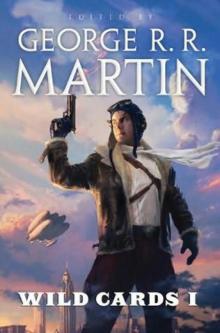 Wildcards wc-1
Wildcards wc-1 Rogues
Rogues Old Venus
Old Venus